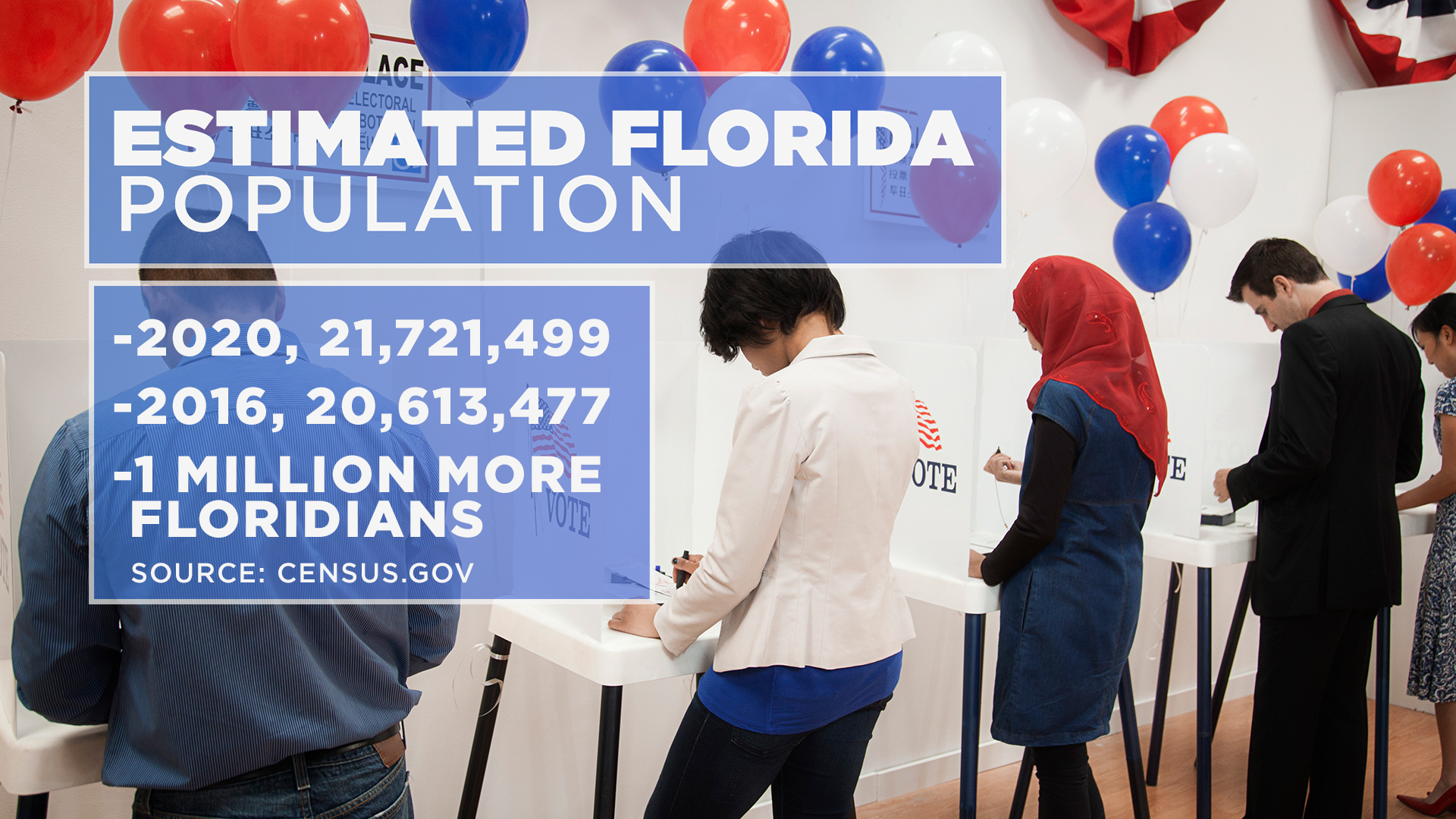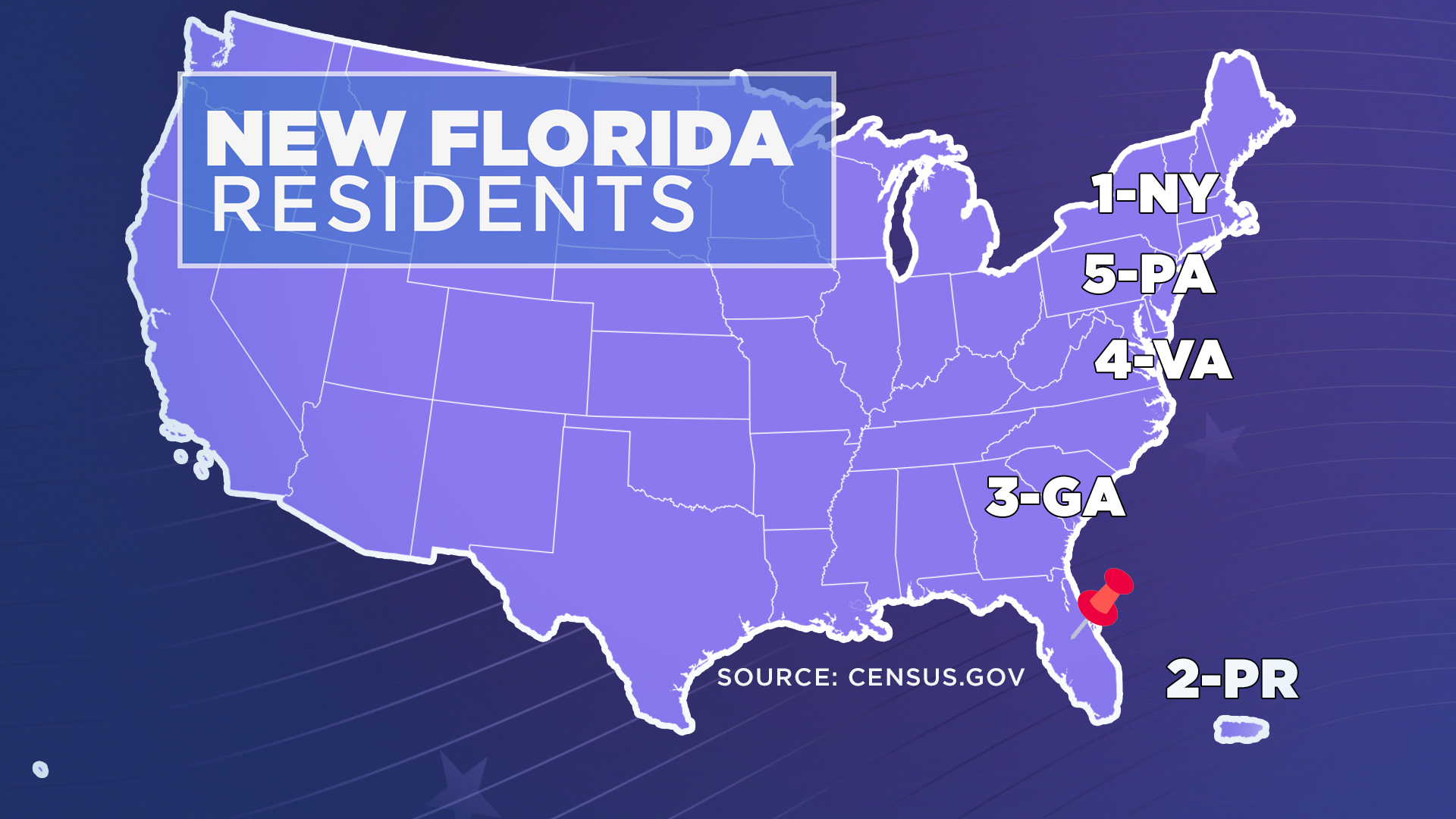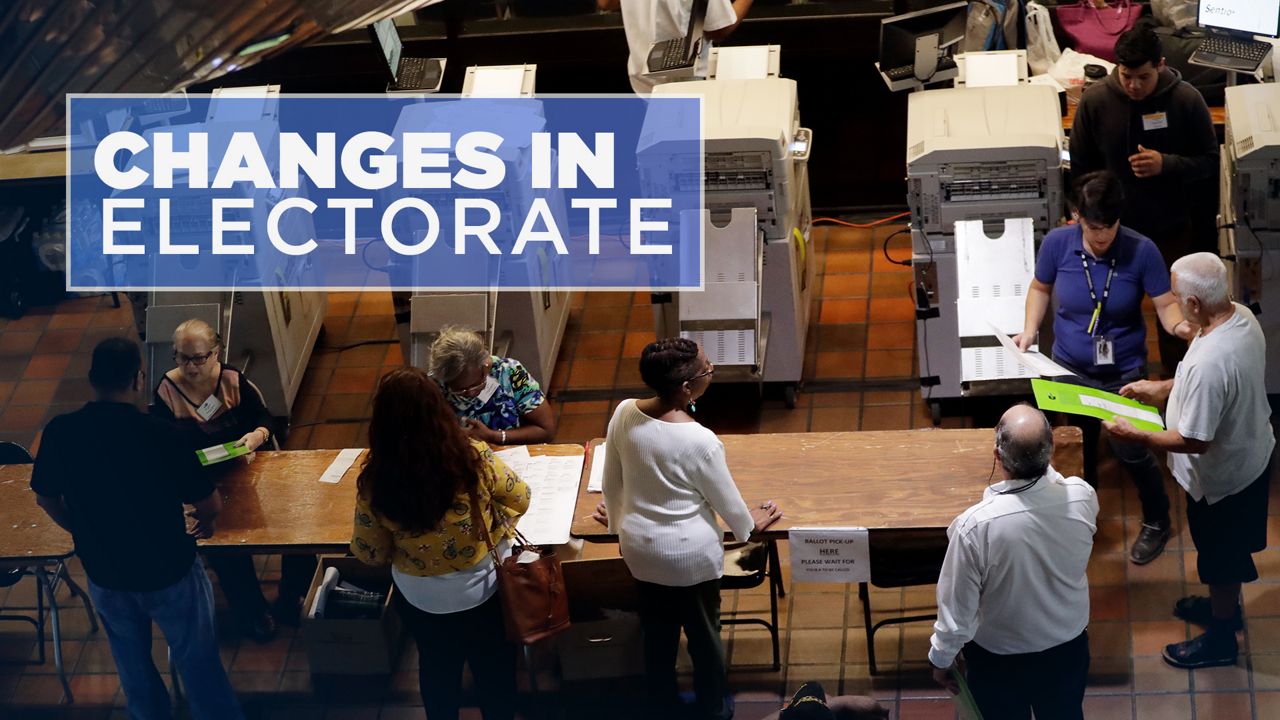TAMPA, Fla. - A factor in Tuesday’s New Hampshire primary contest is how much the electorate has changed since 2016.
- More eligible voters are in Florida since 2016
- Florida’s population to grow by an estimated 1 million from 2016 to 2020
- Majority of new Floridians are here because of migration
A recent study by the University of New Hampshire found one-fifth of potential voters there either lived somewhere else or were not old enough to vote.
As we look forward to Florida’s primary in March, how has the electorate changed here in four years?
The U.S. Census recently released their last batch of information before the 2020 report.
Heading into this year's elections, 80 percent of Florida’s population will be 18 and older.
That's about 3 percentage points higher than in 2016.
And the rate of potential younger voters has increased more than retirees in the last four years.

Florida's population will have grown by a million more, according to the Census.
This estimate does not mean they all can and will vote.
But considering California--the most populous state--will have added about half a million more people since 2016, it is significant.
Only Texas will join us in adding a million more residents in four years.
Where have the new Floridians come from?

A snapshot of yearly increase in net natural growth — that's births minus deaths — shows we only added about 10,000 a year from 2018 to 2019.
Therefore, the other 225,000 estimated on average new residents will have come from migration.
The Census tells us the top five states and territories feeding new Florida residents are New York, Puerto Rico, Georgia, Virginia and Pennsylvania.
Residents coming to Florida who are foreign born are about 90,000 a year.



